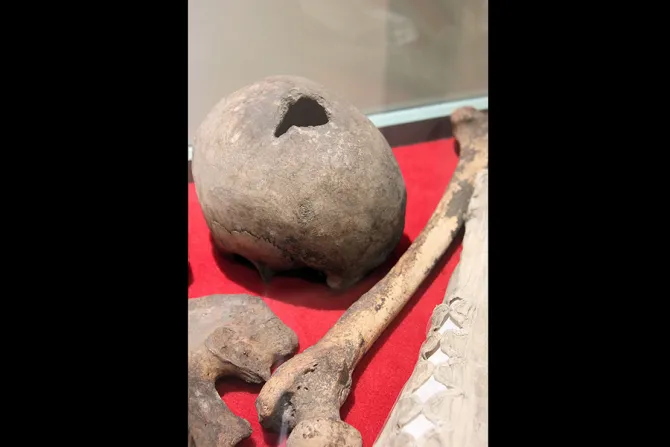Shrewsbury, England, Oct 14, 2015 / 13:03 pm
The English priest St. John Plessington was among dozens martyred because of an anti-Catholic hoax in the seventeenth century. Now a diocese seeks to confirm whether remains long venerated as a martyr's relics are his.
Bishop Mark Davies of Shrewsbury praised the saint's "faithfulness to the point of death" and his witness to priestly life and mission in the diocese.
St. John Plessington was canonized in 1970 by Blessed Paul VI as one of the 40 Martyrs of England and Wales.
"As one of England's 40 martyrs he points to the long continuity of our Catholic faith and our unswerving loyalty to the See of Peter," the bishop told the Shrewsbury Catholic Voice.
"If funds could be found to identify and authenticate his relics it would allow our connection to his heroic ministry and martyrdom to become visible and tangible in a new way for generations to come."
St. John Plessington was born into a recusant family, and was ordained abroad in 1662. He returned to England to minister.
In 1679 Titus Oates fabricated evidence of a Catholic conspiracy to kill King Charles II. British authorities believed the hoax and began to enforce strict Elizabethan-era laws that considered being a Catholic priest an offense of high treason.
St. John Plessington was charged with being a Catholic priest, and was executed by being hanged, drawn, and quartered. He was among more than 35 Catholics executed as a result of Oate's fictitious "Popish Plot."
Before his execution, the saint wrote down his final testament. He said he was a priest and affirmed he was innocent of treason and plotting; he also said he was willing to die for his faith.
Many of the saint's bodily remains were lost after his execution in Chester, more than 40 miles north of Shrewsbury.
In the late 19th century bones were discovered hidden in a pub next to St Winefride's Well in Flintshire, a Welsh county which borders on Chester. The location was a headquarters of Jesuit missionaries, though Plessington was not a Jesuit.
These bones were taken to the Jesuit retreat house of St. Beuno's and venerated as the relics of an anonymous martyr.
Bishop Davies and others hope that DNA testing of the bones can be matched with known relics, to prove they are the remains of St. John Plessington.
Forensic scientists who examined the bones and said they are the skull and the right leg of a priest hanged, drawn and quartered. The skull has a hole punctured by a pike pushed through the head. The bones were found in a garment dated to the period of St. John Plessington's execution.
The Diocese of Shrewsbury is appealing for donors to fund research to confirm the identity of the remains.


